Harry Potter and the Chamber of Secrets utilizes horror film narratives and their depiction of monstrous animals in order to reveal a deeper complex message regarding human-animal relationships. The franchise’s reliance on Ophidiophobia acts to highlight the negative animalisation assigned to animals such as snakes, whilst the treatment of the Basilisk by humans in the film references the immoral exploitation of animals as instruments of violence.
The film initially incorporates characteristics of suspense, fear and anxiety from horror genres into its portrayal of the Basilisk in order to heighten the cinematic suspense and action in the film. From its introduction, the Basilisk is depicted as a fearsome predator and is heavily animalised. A close up shot of the creature hunting Harry establishes its physically terrifying appearance and promotes an anxiety amongst the audience as Harry attempts to escape.
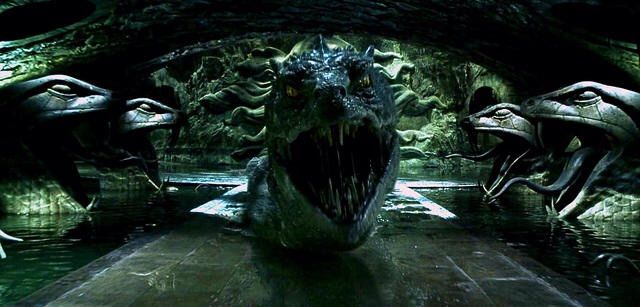
The moment of Harry’s entrapment in the pipes epitomises the films uses of cinematic horror tropes. As the Basilisk enters the tunnel the film becomes eerily silent, with the only sound being the diegetic noise of the creature hissing. The dark lighting, confined space, and serpent’s sharp fangs just meters from Harry’s face, all consolidate within the frame to create an immense sense of peril and tension surrounding the presence of the Basilisk.
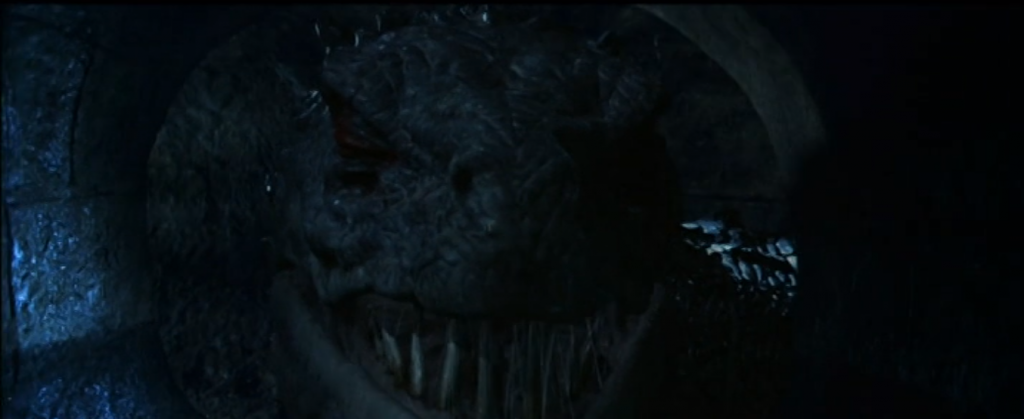
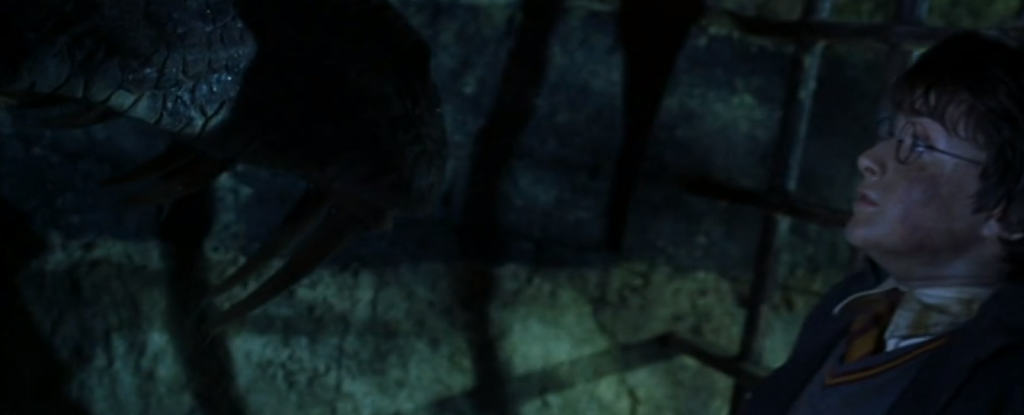
Although the Basilisk’s sinister appearance is necessary for cinematic effect, the film creates a duality between the physical representation of the creature and its more metaphorical significance. Whilst the audience is encouraged to fear the Basilisk, the film poses questions regarding whether the monster is the true source of horror. The Basilisk is depicted as an embodiment of evil within the film, but this symbolism does not represent the evil of mythical creatures but rather that of humanity.
The controlling and commanding of the Basilisk by antagonist Tom Riddle highlights how the monster itself is merely a weapon used to carry out Riddle’s crimes. “It only obeys me” he states as he unleashes the Basilisk upon Harry. Here the film reflects upon negative social attitudes towards animals and the wrongfully normalised human use of animals for personal profit.
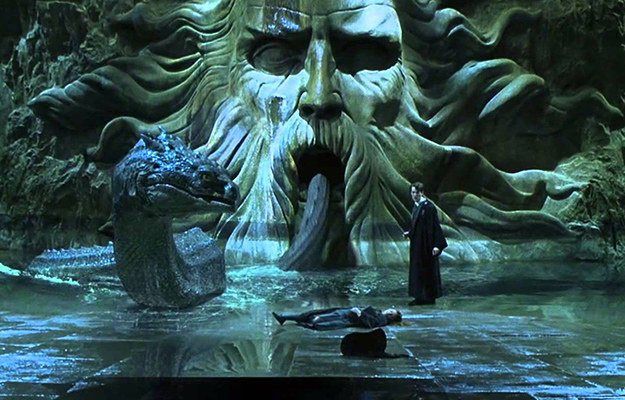
Upon the Basilisk’s entrance, it is apparent that the animal is a commodity, deprived of any free will and regarded with little care or compassion by its master. After the Basilisk’s defeat Riddle remains unharmed and the object that leads to his demise is his own monster’s fang. The irony in Riddles’ defeat presents a message of morality regarding his treatment of the Basilisk, with the fang enacting the revenge of the Basilisk for enslaving such a formidable powerful and creature. Even in its final act of revenge however, the Basilisk’s value is still undermined and is only given the opportunity to display its power after death.
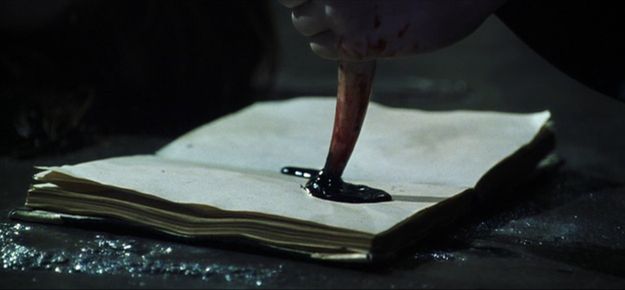
The very fact the film adheres to the biblical cliché of the evil serpent is evidence of how animals are used for human benefit both internally and externally within the Harry Potter franchise. The common phobia of snakes and the stereotypically sinister connotations of the serpent are utilized by the director in order to create a fictional creature of horror that will guarantee financial profit and minimise the production costs of hiring live animals.
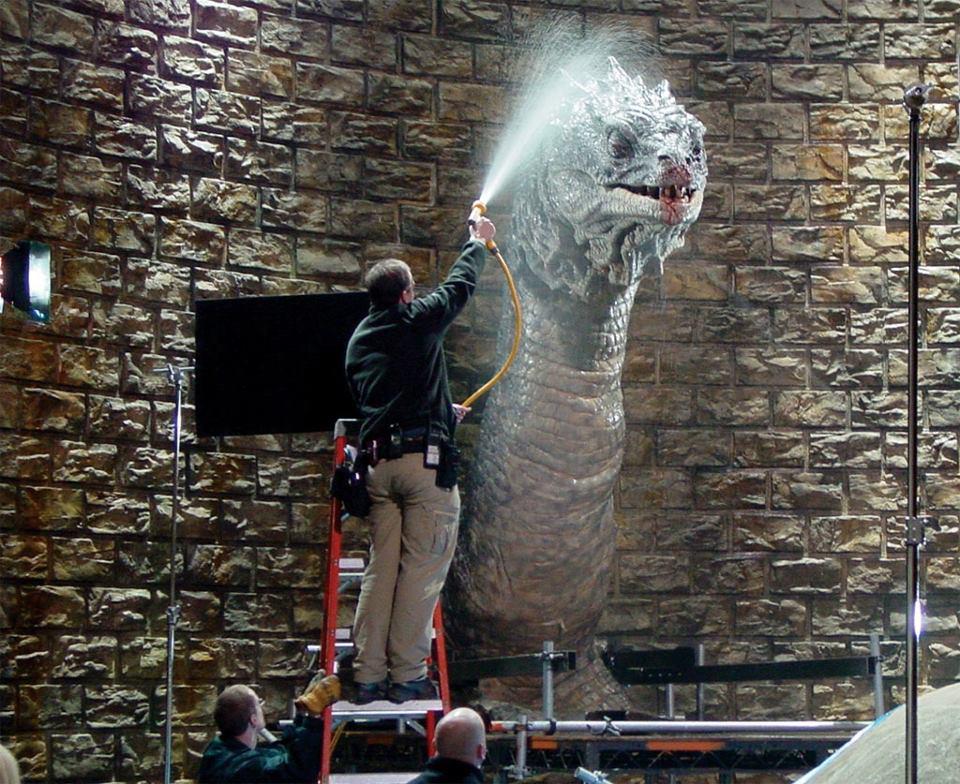
The mistreatment of animals is not explicitly condemned within Harry Potter, but the issues of morality surrounding the treatment of animals and the demonised portrayal of certain species are introduced to the audience to encourage their own interpretation regarding the morality human-animal relationships.